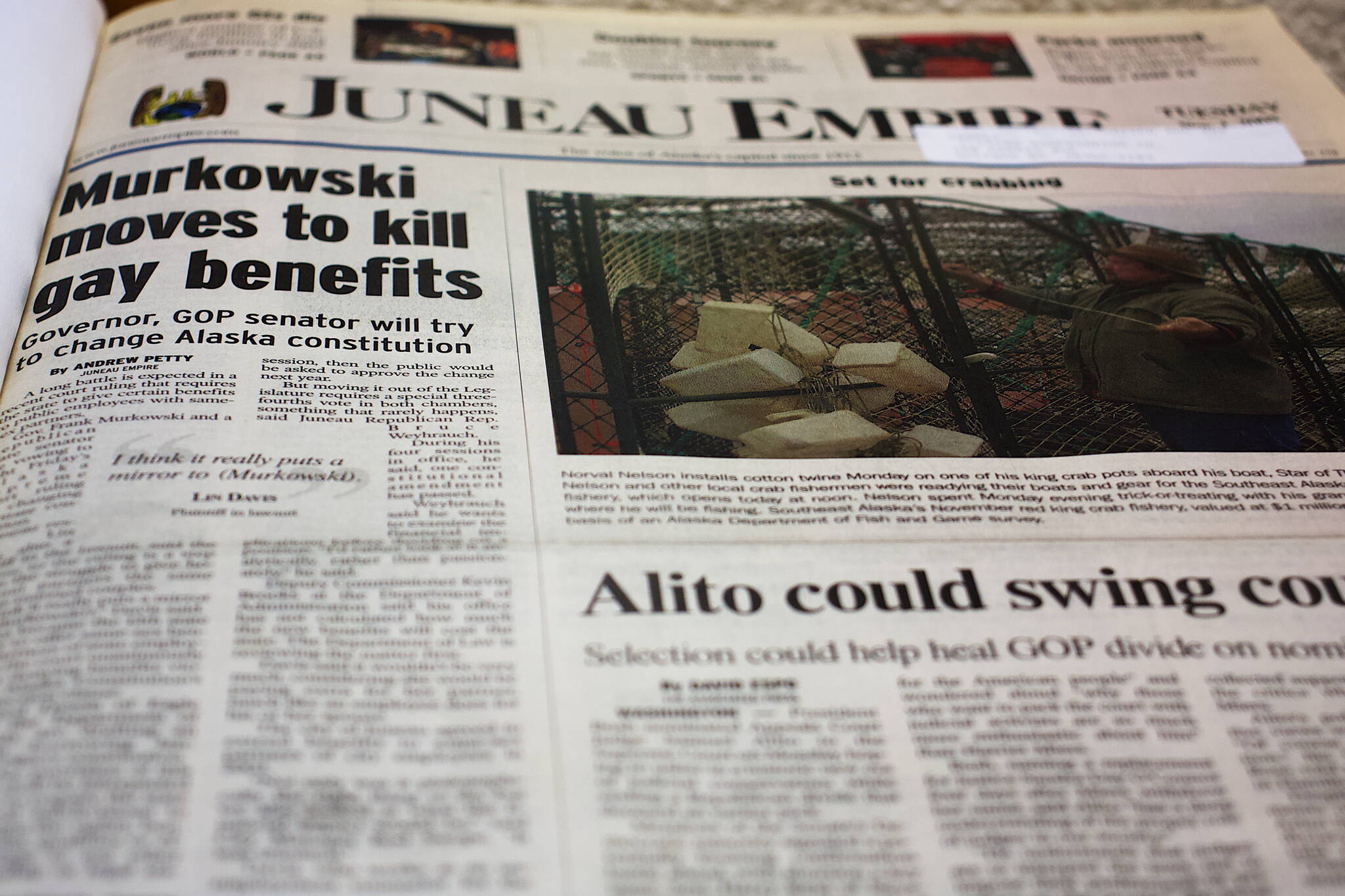Empire Archives is a series printed every Saturday featuring a short compilation of headline stories in the Juneau Empire from archived editions in 1985, 1995 and 2005.
This week in 1985, construction of a long-term residential treatment center to allow children in detention to remain closer to home was planned as an expansion of the Johnson Human Resources Center on Hospital Drive. The Legislature approved $1.2 million earlier during the year to build the center, intended for short-term detentions serving all of Southeast Alaska. State Division of Family Youth Services officials said building the center means fewer Juneau and other Southeast Alaska residents will be sent to a detention facility in Anchorage. In some cases, youngsters were also sent to institutions out of state. “The success rate for kids in institutions is phenomenal if we can involve their parents and families,” said Johnson center superintendent Greg Roth. Marilyn Olson, the division’s acting regional administrator, said 15 to 20 Southeast children were at the Anchorage detention facility at any given time. The Juneau center plans called for a 6,000-square-foot “cottage,” and 2,000-square-foot cafeteria and school, able to accommodate 20 youths and a staff of 14.
Original Story: “Expanded center to keep juvenile offenders closer to home,” by Leslie Murray. 10/31/1985.
This week in 1995, a suggestion by Republican presidential candidate Pat Buchanan shortly before a campaign stop in Juneau that proposed budget cuts in federal programs, including the Bureau of Indian Affairs, would make recipients more self-sufficient was disputed by some Alaska Natives. Buchanan said he supports the proposal because he doesn’t believe in the “permanent welfare state” created by such programs. Alaska Native Brotherhood Grand Camp President Alfred McKinley Sr. said some of the programs Buchanan wants cut stimulate development in Native communities. McKinley said the BIA cuts are also disproportionate to other programs such as the National Park Service which could see an increase. Judy George, assistant to the president of the Tlingit-Haida Central Council, said federal assistance is often critical to smaller Native villages. “The villages have no income base,” she said. “There are no jobs there. They have problems even holding onto subsistence rights to live. The question is where do you go from there if you remove that assistance?”
Original story: “Buchanan remark gets instant reaction,” by Mark Sabbatini. 11/2/1995.
This week in 2005, Gov. Frank Murkowski and a Republican state senator vowed to fight an Alaska Supreme Court ruling in a lawsuit that requires the state to give certain benefits to state employees with same-sex partners. Juneau resident Lin Davis, a plaintiff in the lawsuit, said the response is a step back in the struggle to give homosexual partners the same rights as married couples. “I think it really puts a mirror up to (Murkowski),” Davis said. Alaska became the 12th state to offer same-sex benefits to partners of state employees when the court unanimously ruled that denying benefits violates the Alaska Constitution’s equal protection clause. An amendment drafted by Sen. Fred Dyson of Eagle River and the Alaska Department of Law, borrowing language from Ohio’s constitution, declared “no provision of this constitution shall be interpreted or applied so to require the state or its political subdivisions to extend or assign the rights, benefits obligations, qualities or effects of marriage to any other union, partnership or legal status.” If approved by the Legislature, voters would be asked to approve it the following year.
Original story: “Murkowski moves to kill gay benefits,” by Andrew Petty. 11/1/2005.

